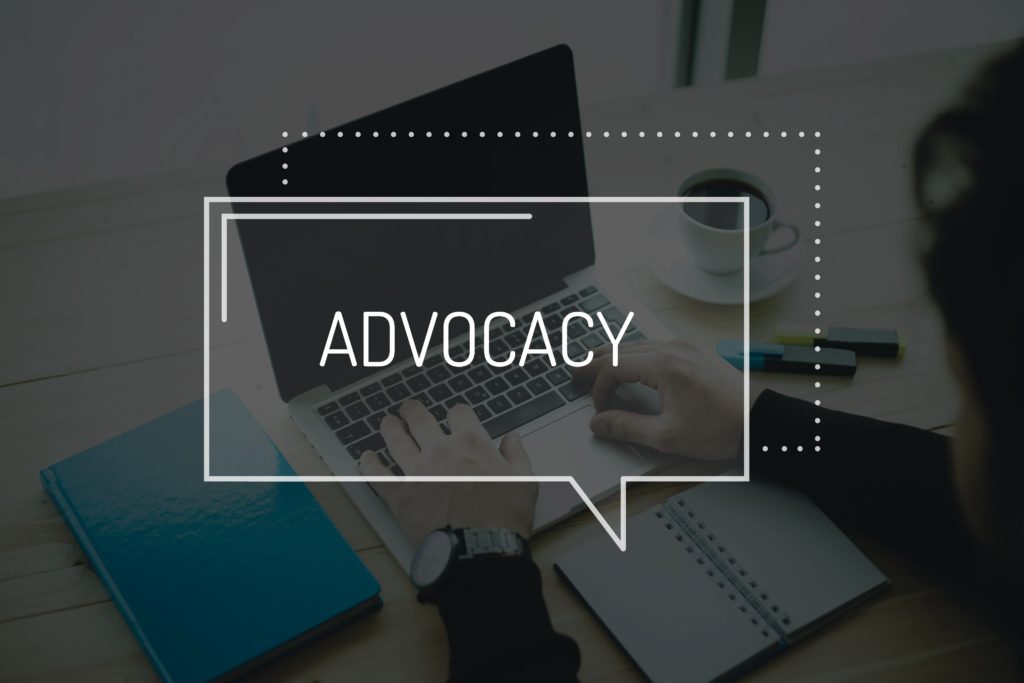Are your board members laser focused on their mobile devices during board meetings? Is there a sense of restlessness at your executive committee and full board meetings? Odds are high that your board members are either preoccupied with business challenges or just plain bored with discussions on Association strategies. One way or another, they might be tuning out and if they are, your board meetings might be perceived as association “bored” meetings.
Association Supply Chain Advocacy
Association Supply Chain Advocacy can be a game changer for members. By uniting the Supply Chain through Associations members can better influence the destiny of their company and their Industry in ways they could not do on their own. Getting and bringing an entire Supply Chain to the table at an Association is a heavy lift but the long term impact will make the effort yield substantial member ROI.
Association Supply Chain Advocacy is Fueled by Actionable Research
Organizing a robust data collection process that includes Associations in the Supply Chain will build actionable information. Having this research will create proactive opportunities to build a collaborative Association Supply Chain Engagement Strategy with Board, Senior Staff, and other Associations from the Supply Chain that includes:
- Comprehensive Industry Research – Supply Chain Interviews and survey research including segmented business challenges and growth opportunities.
- Industry Brainstorming – Creating new and unique activities for the Supply Chain to collaborate and create a growth focused business environment.
- Industry Planning & Roadmap – Highly focused and measurable activities that are continually evaluated by the Industry Supply Chain.
These steps build a plan that identifies the role that each Association in the Supply Chain plays in carrying out its Advocacy Strategy. Instead of a competing with each other, Associations transform into Supply Chain collaborators. In this scenario each Association in the supply chain has clearly established roles, deliverables, and accountability for Industry Advocacy outcomes.
Association Supply Chain Advocacy Equals More Concentrated Effort to Mitigate Emerging Industry Challenges
In a dynamic global economy, new impediments and opportunities will continually surface. Having an Association Supply Chain Advocacy Strategy positions Industries to more quickly and effectively respond. For example, threats in States and in local government are an increasing part of Advocacy strategies. Bringing the impact of an Industry with an Association Supply Chain accelerates response time and improves chances of success.
Recently, the Soft Drink Industry faced an onslaught of proposed Soda Taxes in Santa Fe, New Mexico and in Cook County, Illinois. An impressive advocacy strategy by the American Beverage Association helped the Industry beat back local efforts to impose new taxes that would have been harmful. Unfortunately, this is just a beginning as warning signs point to an increasing amount of challenges from State and Local government. If Associations have members who manufacture and sell products in global markets, then they too will face regulatory and product standards challenges.
Association Supply Chain Advocacy Means Doing Fewer Things Exceptionally Well
As Boards define future success measurements for Associations, it’s a safe bet that they will want fewer activities that require less time and money. Operating margins are a continual focus for Executives and demonstrating increasing levels of efficiency is something they expect. Since Advocacy is a core component of Associations (especially Trade Associations), this integrated approach will be well received. This likely means doing fewer things exceptionally well because your Association may eliminate activities not connected to the Advocacy core.
Association Supply Chain Advocacy is Already Underway
Associations are delivering direct returns on Supply Chain Advocacy through highly focused Advocacy activities:
American Bakers Association – Through the Grain Chain the ABA utilizes direct Industry engagement to surface and address regulatory and legislative matters that add costs to the Baking Industry. The Association published an annual ROI report to highlight their Supply Chain Advocacy.
Jewelers of America – Working through the Industry Supply Chain, JA positions its advocacy to work to continually assess risk and maintain consumer confidence. The Board and the members view the Association as their vehicle to drive results that support their business outcomes.
National Marine Manufacturers Association – The Association effectively utilizes an impressive supply chain advocacy approach to continuously help the Recreational Boating industry keep costs in line.
Global Cold Chain Alliance – Through its Strategic Planning process the Board asked GCCA to play a role in reducing the costs of regulatory compliance. The organization has forged relationships with regulatory agencies that have led in some situations to lower costs of compliance.
NPES – Advocacy is one of the key vehicles connecting global print equipment manufacturers and suppliers with its customers. Through an external working group, NPES is linking all aspects of the Industry Supply Chain to help the Industry impact its business challenges and outcomes.
Association Supply Chain Advocacy
Eliminating competitive boundaries between Associations in the Supply Chain helps Industries address emerging threats from Federal, State, and Local Government through a heavily concentrated Advocacy Strategy. What’s more this strategic approach helps Associations increase their relevance by accelerating Industry impact in the marketplace. As Board Leaders seek greater efficiency and solutions to their business challenges, they expect all organizations to work together for the good of the Industry. Meeting this new reality is a hand and glove strategy for Associations who want to energize member engagement and increase Advocacy Impact for their members. This could be the dawn of Member Engagement 3.0.
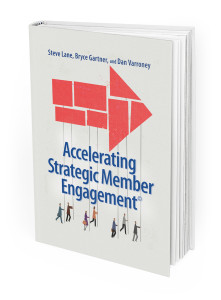 Click here to receive your free eBook “Accelerating Strategic Member Engagement”
Click here to receive your free eBook “Accelerating Strategic Member Engagement”
The Recession Ready Association
It’s been seven years since the end of the great recession and one economist thinks there is a 60% chance of a recession next year. As global uncertainty and slow U.S. economic growth dominate the landscape, CEO’s should assess whether or not they are leading a recession ready association. While the next recession may not be as severe as the last one, be rest assured that business leaders are continually increasing scrutiny over expenditures not related to corporate performance.
Members Hire Customized Advocacy
Members hire Customized Advocacy because they have no choice. They face turmoil driven by ever increasing new technologies, evolving consumer preferences, and political polarization. What’s more member companies are facing increasing demands for transparency from their board members, shareholders, and also from their consumers. Associations who customize their advocacy strategies will remain relevant. Those who don’t will falter.
Association Boards insist that their CEO’s are as nimble and focused on the marketplace as they are. Members hire Customized Advocacy because of the dynamic nature of the business environment and they need results in real time. Your organization’s ability to creatively and rapidly respond to new and emerging challenges through Customized Advocacy is what your members expect.
The magnitude of advocacy challenges spread far beyond the confines of the Washington, DC Beltway. In industries ranging from Food to Consumer Products, Associations are regularly challenged with legislative and regulatory activities at the Federal, State, and local government levels. Building timely and Customized Advocacy to respond rapidly is essential.
Associations will need ongoing connectivity with Board Leaders in strategic discussions about current and emerging Industry challenges. It also requires ongoing member interaction, and Industry focused research to develop and implement Customized Advocacy strategies.
NATIONAL MARINE MANUFACTURERS ASSOCIATION
NMMA represents boat, marine engine and accessory manufacturers, its members manufacture an estimated 80 percent of marine products used in North America.
Reflecting the Industry’s desire to continually maximize its Advocacy efforts, Thom Dammrich, President & CEO, NMMA continually seeks opportunities to utilize Customized Advocacy to maximize business impact for the Marine Industry. Part of NMMA’s Customized Advocacy focus is building, leading, and participating in coalitions to advocate and promote the Industry.
 Nowadays the most impactful resource that an Industry has is the data it utilizes to make its case with Legislators and Regulators. Where Industry numbers are presented in these conversations, it could have more impact if numbers were reflected in data released by the Federal Government. Recognizing this, the Outdoor Recreation Roundtable, a coalition of twenty one outdoor recreation trade associations that includes the National Marine Manufacturers Association, the Outdoor Industry Association, and the Motorcycle Industry Council galvanized their efforts. Their focus was to have Outdoor Recreation recognized by the Federal Bureau of Economic Analysis:
Nowadays the most impactful resource that an Industry has is the data it utilizes to make its case with Legislators and Regulators. Where Industry numbers are presented in these conversations, it could have more impact if numbers were reflected in data released by the Federal Government. Recognizing this, the Outdoor Recreation Roundtable, a coalition of twenty one outdoor recreation trade associations that includes the National Marine Manufacturers Association, the Outdoor Industry Association, and the Motorcycle Industry Council galvanized their efforts. Their focus was to have Outdoor Recreation recognized by the Federal Bureau of Economic Analysis:
- Legislation was introduced and later enacted into law by President Obama in 2016.
- The new law directed the Bureau of Economic Analysis to develop a measurement of the outdoor economy in the same way that it tabulates other Industries and the overall economy.
- The Outdoor Industry Association updates its estimate of the Outdoor Recreation Economy in 2017.On February 14, 2018, the U.S. Department of Commerce’s Bureau of Economic Analysis (BEA) released a report showing that the outdoor recreation economy accounted for 2.0 percent or $373.7 billion of current-dollar GDP in 2016.
 Thom Dammrich celebrated the Industry’s Customized Advocacy success, “As an industry, we are proud to generate millions of American jobs and be a driving economic force from coast to coast, and we are grateful that the BEA and the Department of Commerce have decided to recognize that.”
Thom Dammrich celebrated the Industry’s Customized Advocacy success, “As an industry, we are proud to generate millions of American jobs and be a driving economic force from coast to coast, and we are grateful that the BEA and the Department of Commerce have decided to recognize that.”
NMMA regularly conducts Industry research and is in the midst of a Strategic Industry Business Planning Process.
HOUSEHOLD & COMMERCIAL PRODUCTS ASSOCIATION
HCPA is a Trade Association that advocates for companies that make and sell $180 billion annually of products used for cleaning, protecting, maintaining, and disinfecting in homes and commercial environments. Association members employ 200,000 people in the U.S.
Since joining HCPA as its new President & CEO in January 2017, Steve Caldeira and his team continually communicate with their Board and members to stay connected to evolving member challenges and opportunities.
Their Customized Advocacy strategy incorporates Board direction for:
- Collaboration with Supply Chain-related Trade Associations to maximize the Industry’s business impact.
- Communication and responsiveness on increasing consumer transparency concerns with NGOs (non-governmental organizations) and retailers who sell products.
- Scientific Research to highlight and validate the Industry’s critical role in developing environmentally safe products for consumers.
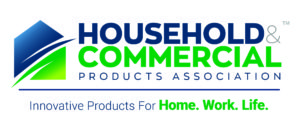 The HCPA Customized Advocacy model delivered an important win through the passage and enactment of California’s Cleaning Product Right to Know Act in 2017. Environmental and public health groups believe that consumers and workers need to know a lot more about the cleaning products in their kitchens, bathrooms and work spaces. Product manufacturers want labels that educate their customers without alarming them or providing details so minute that they obscure serious concerns about human health.
The HCPA Customized Advocacy model delivered an important win through the passage and enactment of California’s Cleaning Product Right to Know Act in 2017. Environmental and public health groups believe that consumers and workers need to know a lot more about the cleaning products in their kitchens, bathrooms and work spaces. Product manufacturers want labels that educate their customers without alarming them or providing details so minute that they obscure serious concerns about human health.
The balanced solution that California lawmakers devised allows consumers and workers to see the facts they really need to know, because the labeling focuses on important ingredients, such as those that have been linked to various health concerns. The California law, was backed by more than 100 environmental and public health groups, including the Natural Resources Defense Council, Breast Cancer Prevention Partners, Women’s Voices for the Earth and the Environmental Working Group, as well as cleaning product giants such as ECOLAB, Procter & Gamble, Reckitt Benckiser, and SC Johnson. Both sides compromised after numerous meetings; a clear sign of a successful negotiation.
 Reflecting upon the Industry’s Customized Advocacy success, Steve Caldeira notes that “our industry will always be open to collaboration with a diverse group of stakeholders to successfully address our member’s interests.”
Reflecting upon the Industry’s Customized Advocacy success, Steve Caldeira notes that “our industry will always be open to collaboration with a diverse group of stakeholders to successfully address our member’s interests.”
How Associations Build Their Own Customized Advocacy Strategies
Associations can develop Customized Advocacy through ongoing interaction with boards and members. What drives successful Customized Advocacy is a steady flow of communication and collaboration to help define the challenges and the business impact that the Industry is seeking:
- Stay connected through a systematic approach to annual data collection through interviews and Industry (or Profession focused) survey research.
- Utilize research to focus Board meeting discussions on Industry challenges and then deliver Customized Advocacy that adds business impact to the members.
- Learn about member challenges firsthand. Whenever possible meet with members face to face.
- Continually measure and assess business impact.
Each step will maximize the alignment between the Association and your members. Moreover, your organization will continually add business impact to members because of the Customized Advocacy strategies that you develop.
Members Hire Customized Advocacy
Despite strong growth forecasts member company CEO’s have a less robust view after 2018. From now on member companies will seek out those Associations that deliver business impact. Customized Advocacy helps position Associations as the valuable ally that members need to navigate the complex business landscape.
Organizations such as NMMA and HCPA are perceived as extensions of business and marketing strategies by their members and deservedly so. They demonstrate how important it is for today’s Association to help navigate and advance Industries through an ongoing era of disruption and turmoil. In doing so these organizations will increase their business impact and their relevance because of their Customized Advocacy focus.
Yes, it’s important to remember in 2018 that Members Hire Associations and Members Fire Associations. It’s just as important to recognize that from now on Members will especially hire Associations that deliver Customized Advocacy.
To learn more about how your Association can implement Customized Advocacy click here.
Stop Selling Stuff
At the start of your board meetings do board members ask themselves “I hope they try selling stuff today?” Of course not. If anything, they want your organization to stop selling stuff. In today’s disruptive environment they are preoccupied with their business challenges and global uncertainty. Hearing endless staff reports and selling stuff is not where they are at anymore. Today’s board members want strategic meetings focused on their external challenges and they want their Associations to help them address these challenges.
Please Stop Selling Stuff
When your Trade Association was launched, your founders were focused on how an organization could address business challenges and achieve specific outcomes. They believed a combined effort would accomplish more as an industry or a profession that they could on their own. It’s a safe bet that your founders never imagined that they should hire staff to “sell us stuff” at board meetings.
Board Members Tuning Out
 Everyone listens to their favorite radio station “WIIFM,” What’s in It for Me. If you observe several board members staring at their mobile devices or texting during your meetings, they’ve already switched channels. Keeping them tuned in to your channel means you must address what they hope to hear.
Everyone listens to their favorite radio station “WIIFM,” What’s in It for Me. If you observe several board members staring at their mobile devices or texting during your meetings, they’ve already switched channels. Keeping them tuned in to your channel means you must address what they hope to hear.
Highly Engaged and Strategic Boards
How do we make your Association remain number one on their listening dial? First, elevate your board meetings to strategic conversations about board member business challenges. Secondly, minimize the staff “report out” practice as much as possible. Instead, discuss how these business challenges could be addressed through your association. This makes your meeting relevant and helps to justify a board member’s time away from their business.
What do our board members really tune in for at Board Meetings?
- Discussions addressing critical business challenges and opportunities and how their Association could help address these challenges.
- How the Association is continually building more allies to help leverage the industry’s position to reduce regulatory compliance costs.
- The organization is investing its revenues to produce market research or technologies that provides meaningful insights to reduce costs or grow top line revenue.
These approaches accelerate board engagement and make your board deliberations more strategic. Boards who are highly engaged and strategic in focus outperform those organizations who are not.
Understanding Board and Industry Perceptions
Every board member has different expectations, business challenges, and business opportunities. Knowing and understanding these issues help to align your board meetings with the strategic outcomes that your board members care most about. You can surface these perceptions through your strategic business planning process through:
- Industry or Profession Focused Board interviews.
- An industry wide business impact survey (instead of an association focused product and service satisfaction survey).
This detailed and actionable research helps you identify and prioritize the issues that move the needle for your board and the membership. In doing so, your organization can reposition itself as a solution partner and in doing so become more relevant.
“WISP” A Station Your Board Wants to Hear
Increasingly Trade Associations are positioning their organizations to that of a Worldwide Industry Solution Partner (WISP). For example, NPES, the Aluminum Association, the American Staffing Association, the Society for Vascular Ultrasound, and the Jewelers of America have transformed themselves into WISP’s. Each of these organizations are finding new and innovative ways to serve their members, promote their industry, or help to accelerate the relevance of an important field inside the medical profession.
Worldwide Industry Solution Partners
WISP’s align with and drive business outcomes for industries. For GCCA, the Global Cold Chain Alliance, it’s about helping the industry manage and rein in their regulatory costs:
- In 2009, the industry’s fines and inspections increased by more than 300%.
- GCCA signed the first OSHA Alliance with the new administration in mid-2010.
- The Association collaborated with OSHA on safety initiatives, and inspector training.
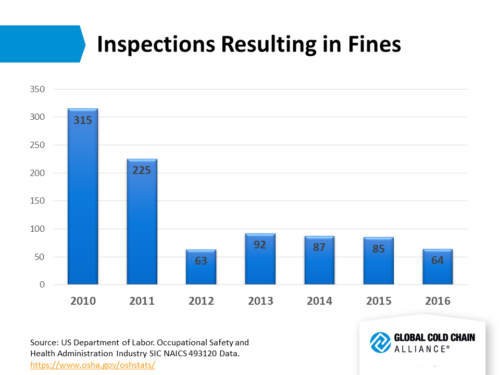
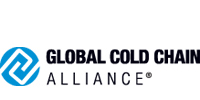 GCCA’s actions on behalf of the Cold Chain helped reduce compliance costs considerably. By understanding member expectations, member business challenges and top line growth opportunities, the association is much more relevant. What’s more, associations like GCCA are increasingly listener favorites. Its strategic plan is a chart topper, it reflects the industry’s challenges while it helps drive business growth through the Association. GCCA is not selling stuff, it is driving industry business outcomes.
GCCA’s actions on behalf of the Cold Chain helped reduce compliance costs considerably. By understanding member expectations, member business challenges and top line growth opportunities, the association is much more relevant. What’s more, associations like GCCA are increasingly listener favorites. Its strategic plan is a chart topper, it reflects the industry’s challenges while it helps drive business growth through the Association. GCCA is not selling stuff, it is driving industry business outcomes.
Stop Selling Stuff
 Although there are visible signs of economic growth, global terrorism threats and weak consumption are holding back more robust growth. If we want board members to stay tuned to our channel we must play what they want to hear or they will tune us out. So if your board members are sarcastically saying “I hope they try selling stuff today?” It’s out of frustration and only a matter of time before they vote with their feet and their checkbook and tune in to an entirely different channel. What they really mean is stop selling stuff and instead help their industry address its challenges and drive its business outcomes.
Although there are visible signs of economic growth, global terrorism threats and weak consumption are holding back more robust growth. If we want board members to stay tuned to our channel we must play what they want to hear or they will tune us out. So if your board members are sarcastically saying “I hope they try selling stuff today?” It’s out of frustration and only a matter of time before they vote with their feet and their checkbook and tune in to an entirely different channel. What they really mean is stop selling stuff and instead help their industry address its challenges and drive its business outcomes.
Free eBook “Accelerating Strategic Member Engagement” is available upon request for all Association Executives at Potomac Core – Association Consulting
Advocacy Drives Business Outcomes
For leading Associations, their mantra is clear Advocacy Drives Business Outcomes. These organizations collaborate with their boards to make sure that the Association’s Advocacy Strategies reflect the growth challenges and opportunities that their members care most about. Even though the U.S. economy grew at a brisk 3.5% in the third quarter of 2016 growth forecasts for 2017 remain mixed. What also remains to be seen is just how much disruptive technologies and policies of the new Administration will impact the business landscape in the new year.
What is becoming increasingly more clear is how Associations can accelerate their business impact for their members in 2017. There is already evidence that CEO’s are leveraging organizational resources to engage their members in ambitious policy and regulatory agendas. In doing so these Associations are key allies in helping their members overcome challenges, reduce costs, and in several cases enter new markets.
Policy Priorities Mirror Industry Outcomes
Associations including the Global Cold Chain Alliance, GCCA, and the American Bakers Association, ABA, utilize their Advocacy Strategies to link member dues investments to the cost reduction and top line growth outcomes that their members seek. GCCA’s strategic plan incorporates advocacy and business outcomes and ABA emphasizes the impact of its advocacy strategies in an annual video. The Fertilizer Institute’s, TFI, Advocacy Strategy is laser focused on helping its members manage its costs through a slow growth cycle. Each of these organizations demonstrate how advocacy drives business outcomes.
The Board leaders and the Association are collaborators and make sure policy priorities reflect the challenges and opportunities facing the industry per Heidi Biggs Brock, President and CEO, at the Aluminum Association.
Engaging the Board on External Issues
As the global marketplace grows more increasingly complex some Associations have found it difficult to increase board attendance and active participation at their meetings. Organizations who structure their board meetings as more of a “knowledge sharing” and strategic focus for attendees are finding higher levels of interest and engagement.
Measuring Advocacy and Policy Outcomes
 Showing how advocacy delivers a return on member engagement is a critical element of what organizations like the Aluminum Association provide for their members. Being able to demonstrate how your organization measures and tracks these outcomes is especially impactful in the minds of the dues paying member.
Showing how advocacy delivers a return on member engagement is a critical element of what organizations like the Aluminum Association provide for their members. Being able to demonstrate how your organization measures and tracks these outcomes is especially impactful in the minds of the dues paying member.
Expanding Advocacy Impact
Building and recruiting allies inside and outside your industry is a staple for Associations who seek to magnify the impact that they can deliver for their members. Identifying who else needs to be at the table to help your organization build an even greater base of support is essential.
Advocacy Drives Business Outcomes
In an uncertain world board leaders and members insist upon direct return from their investment of time and financial resources. The Aluminum Association, the American Bakers Association, the Fertilizer Institute, the Global Cold Chain Alliance, and several others have already transformed their organizations. Through tightly focused Advocacy Strategies Today’s Associations are upping their game and helping industries reshape the external business environment for their members. They are doing so by communicating how Advocacy drives business outcomes.
Free eBook “Accelerating Strategic Member Engagement” is available upon request for all Association Executives at Potomac Core – Association Consulting

